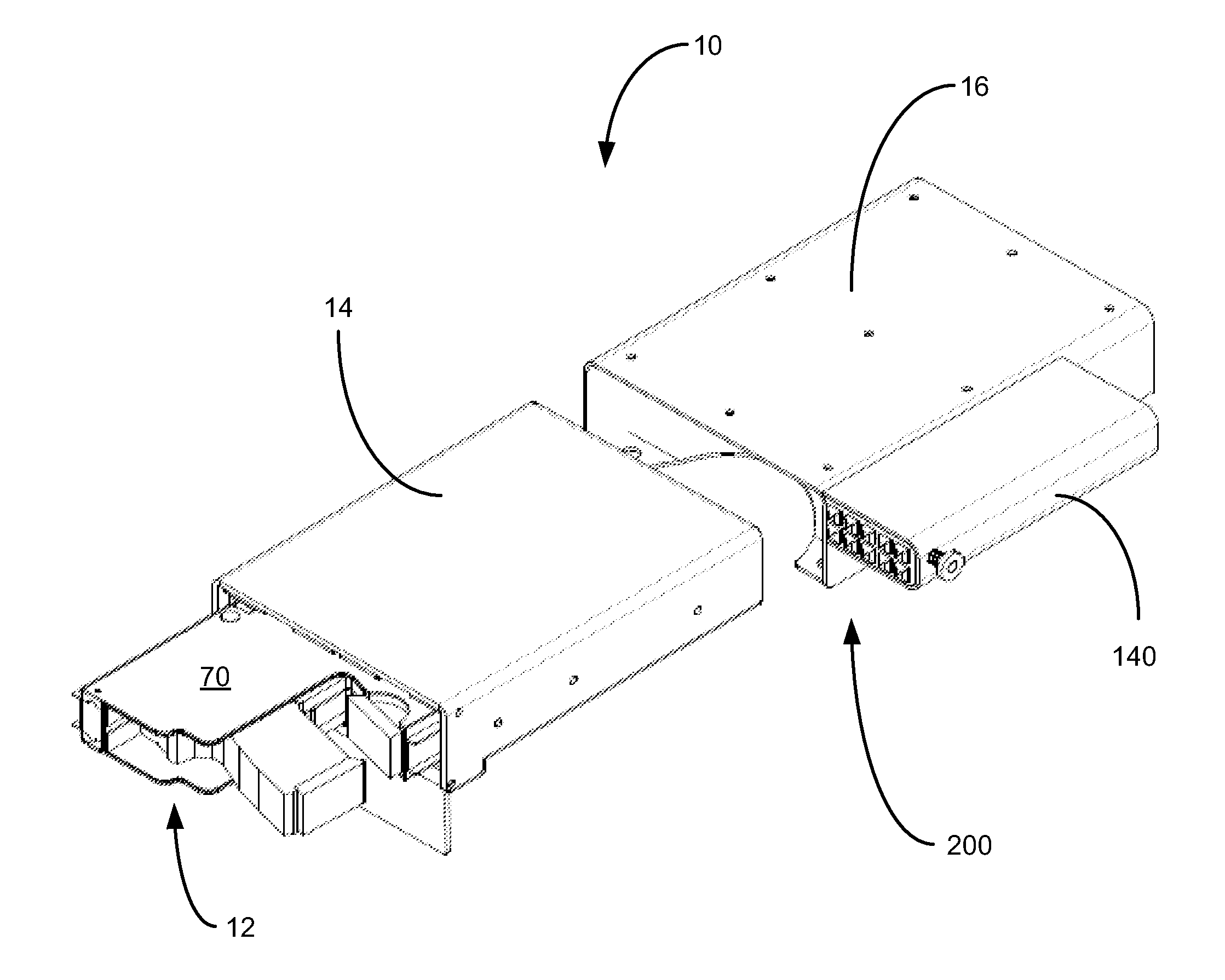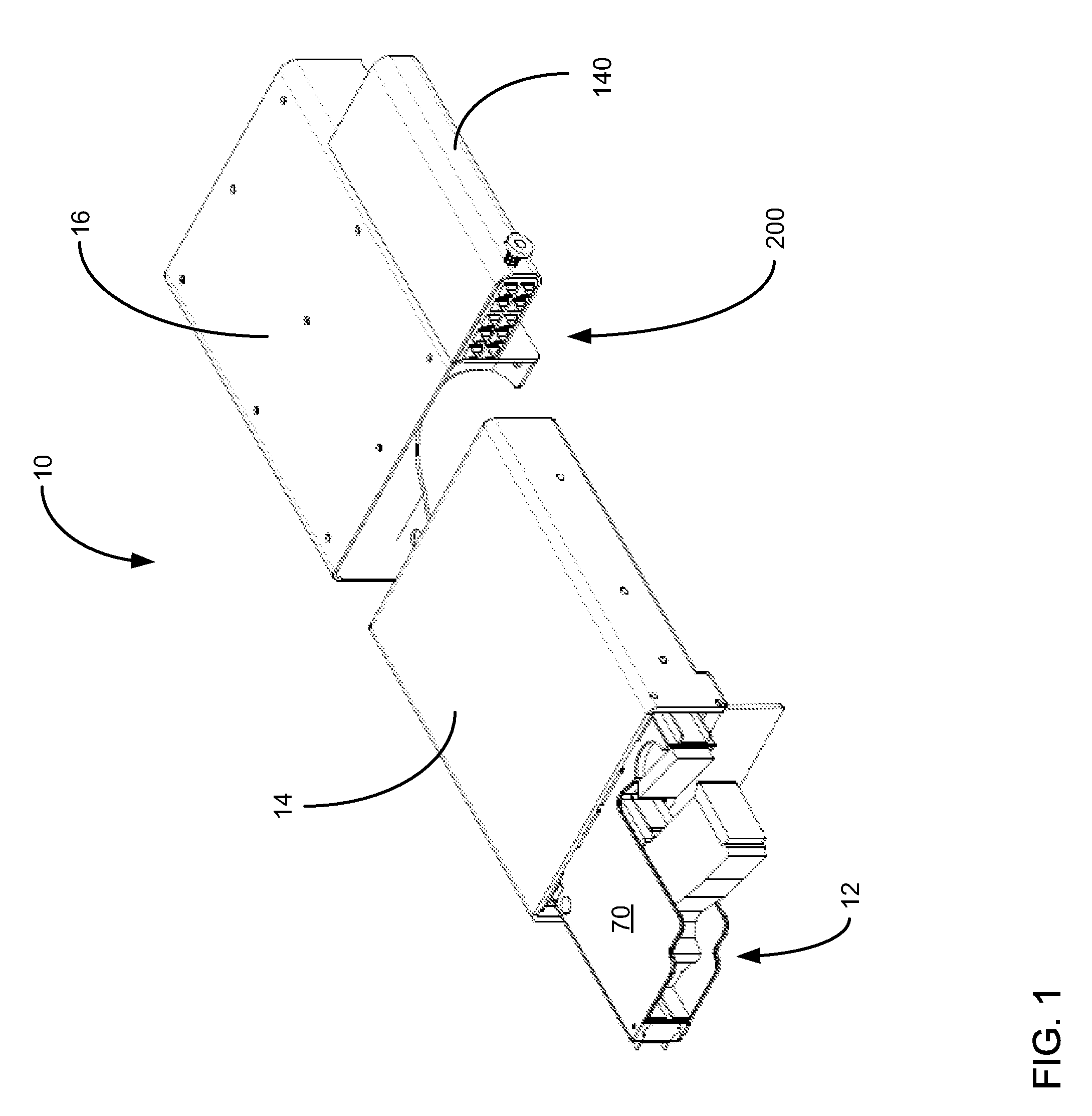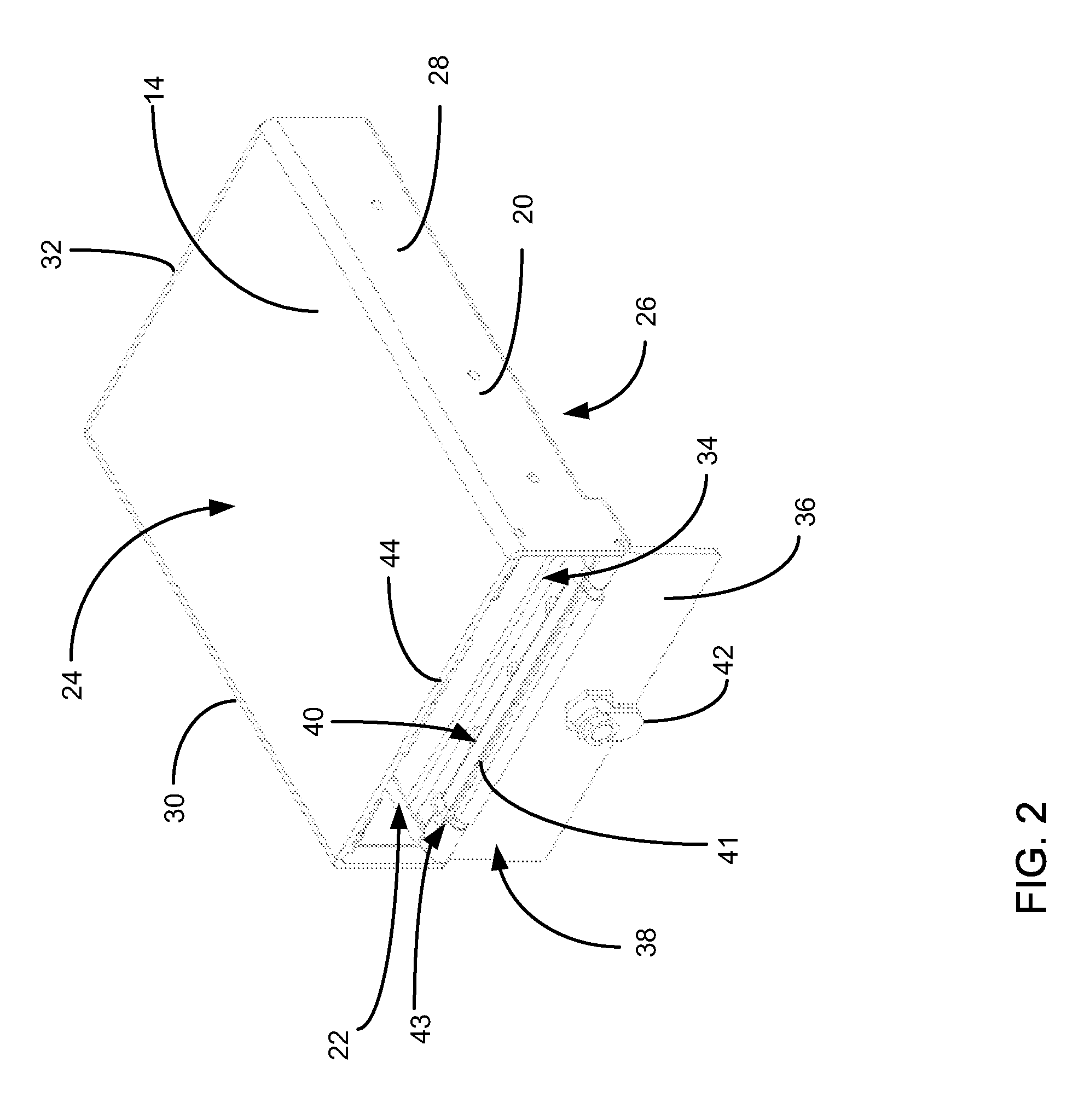The popularity in the utilization of firearms as a means of self-defense has created unique challenges for the secure storage and rapid retrieval of firearms.
Although there are a variety of different safes on the market, all of these safes have inherent limitations that result in gun owners having to make unnecessary and potentially dangerous compromises to achieve their objectives.
Large stationary safes are effective at storing firearms safely and deterring theft, but suffer from some serious disadvantages, such as mobility of the safe and rapid
accessibility of the stored firearm.
This dangerous and sometimes tragic
scenario is most often observed when a firearm owner, before going to
bed, removes the firearm from the safe and places it in a drawer or on top of a nightstand for quick retrieval.
However, security of the firearm is compromised, exposing the firearm to children and other unauthorized persons.
These safes offer improved
accessibility over the larger stationary safes, but are limited in deterring theft, portability, safety and rapid firearm retrieval.
Due to the small size, these safes are ineffective in deterring theft.
Although most of these safes have provisions that allow them to be bolted down to an immovable object, once affixed to the unmovable object, the safe is then immobile, thereby losing the important
advantage of portability.
However, the use of multiple safes is both costly and requires that the firearm be physically handled when moving the firearm from one safe to another safe.
This action increases the possibility of an accidental
discharge caused by the increased handling of the firearm.
Besides not offering any
physical protection for the firearm when transported to different locations, this method of storage leaves an owner vulnerable to an accidental
discharge by not protecting the trigger during the removal of the firearm from the safe.
In addition, any rapid firearm retrieval is lost due to the positioning of the firearm in the safe.
Because the
handle of the firearm is not totally exposed and easily grasped, valuable time is wasted in trying to retrieve the firearm.
Although the majority of situations are most effective if the firearm is carried on an individual's person, such as carrying the firearm in a holster, there are many situations where this method of
carriage can be extremely dangerous.
Carrying a firearm while dealing with large groups of people increases the risk of having the firearm stolen from an agent and used on that agent or other innocent victims.
Also, the issuance of a firearm to each individual has the potential for creating both dangerous and costly results.
With more personnel possessing firearms, there is a higher probability that an unintentional
discharge will occur or that the firearms will be lost or stolen.
The other notable
disadvantage is the increased cost associated with arming each individual with a firearm, even though that firearm is only utilized in a
confined space for a small proportion of an individual's work day.
In addition, the internal mechanical linkage requires the safe to be large and heavy, which severely limits portability.
As discussed above, due to the safes smaller size, these safes are ineffective in deterring theft.
Although most of these safes have provisions that allow them to be bolted down to an immovable object, once affixed to the unmovable object, the safe is then immobile, thereby losing the important
advantage of portability.
However, the use of multiple safes is both costly and requires that the firearm be physically handled when moving the firearm from one safe to another safe.
This action increases the possibility of an accidental discharge caused by the increased handling of the firearm.
These safes maintain a
constant pressure on the door, making opening and closing of the locking device cumbersome and difficult.
Although portable, the safe and firearm are completely exposed to theft.
Although the safe may have provisions that allow them to be bolted down to an unmovable object, once affixed to the unmovable object, the safe is then immobile, thereby losing the important
advantage of portability.
However, the use of multiple safes is both costly and requires that the firearm be physically handled when moving the firearm from one safe to another safe.
This action increases the possibility of an accidental discharge caused by the increased handling of the firearm.
Besides not offering any
physical protection for the firearm when transported to different locations, this method of storage leaves an owner vulnerable to an accidental discharge by not protecting the trigger during the removal of the firearm from the safe.
In addition, any rapid firearm retrieval is lost due to the positioning of the firearm in the safe.
Because the
handle of the firearm is not totally exposed and easily grasped, valuable time is wasted in trying to retrieve the firearm.
Additionally, some safes offer a variety of secure methods to
gain access to the firearm but fail to address the important aspect of rapid firearm retrieval from the safe.
This action is also unsafe as the trigger of the firearm is exposed during the extraction process, enabling the operator to potentially discharge the firearm while gaining access.
Additionally, due to the safe's smaller size, these safes are ineffective in deterring theft.
This form of security is easily compromised by simply
cutting the cable or dismantling the structure that the cable is attached to.
There is also the inconvenience of attaching and reattaching the long and cumbersome cable every time the user desires to secure the safe.
However, these safes tend to be bulky and heavy, having very limited portability and providing no protection from theft.
These safes might maintain security and possess
access technology, but lack portability and the ability to retrieve the firearm in a rapid and safe manner.
These locking devices leave the firearm exposed to the elements.
It is also
time consuming to remove the locking device from the firearm and provides no protection from theft.
Furthermore, in many areas, state laws prohibit the
carriage or transportation of open firearms in the confines of the vehicle.
This often results in transporting a firearm that is unsecured and vulnerable to unauthorized access or theft.
Additionally, the firearm is physically unprotected from the surrounding environment, leaving it vulnerable to damage from dropping, denting or
scratching of the firearm.
 Login to View More
Login to View More  Login to View More
Login to View More 


